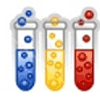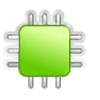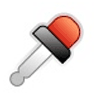
The Calvary Academy Science Fair
 Science Fair Requirements
All 1st-6th Requirements are outlined in the Science Fair Packet.
Science Fair Requirements
All 1st-6th Requirements are outlined in the Science Fair Packet.
Science Fair Packet (1st-6th Grades)
All Secondary Requirements:
Secondary Requirements
 Display Board
Display Board Layout (1st-4th Grades)
Display Board
Display Board Layout (1st-4th Grades)
Display Board Layout
Section 1: Question– A question that asks what the scientist wants to find out.
Section 2: Hypothesis – What do you think will happen? Use an “If…(manipulated variable),
then…(responding variable)” type statement. Include a reason for your prediction.
Section 3: Resources-reference materials: web sites, magazines, books or adult expertise utilized for the project.
Section 4: Variables – What is measured and how often? Include the variables below.
1 variable kept the same (controlled) 1 variable changed (manipulated)
1 variable measured (responding)
Section 5: Materials and Procedures – A list of what materials will be used. Use multiple trials (usually a minimum of five). Make a list of the steps that are going to be used to complete the science fair project. Note safety concerns.
Section 6: Data – Record what happened to the measured variable in the science journal. Make charts or graphs to help summarize the data.
Section 7: Conclusion – A conclusion uses data to tell if the hypothesis was accepted or rejected and provides reason(s) to support this data. Other possible elements in a conclusion include explaining why the experiment would be useful and/or predicting what might happen if the investigation lasted longer.

 Projects should be student driven.
Project ideas should come from the students, and the project should be driven by them. Parents should use their best judgment in deciding when to get involved, such as when there is a potential safety issue. For especially young kids, parents may provide some guidance, but it is important that the kids be able to call the project their own.
Projects should be student driven.
Project ideas should come from the students, and the project should be driven by them. Parents should use their best judgment in deciding when to get involved, such as when there is a potential safety issue. For especially young kids, parents may provide some guidance, but it is important that the kids be able to call the project their own.
 Five Types of Projects
The Calvary Academy Science Fair is happy to accept a variety of science fair projects. There are five recognized projects: experiment, model, demonstration, research and collection. Elementary
Five Types of Projects
The Calvary Academy Science Fair is happy to accept a variety of science fair projects. There are five recognized projects: experiment, model, demonstration, research and collection. Elementary
Secondary
Click here for ideas on Collections:Types of Collections
 Judging and Awards
Our Science fair is competitive. Students will be divided into five categories: 1st-2nd, 3rd-4th, 5th-6th, 7th-10th and 11th-12th. Judging will be based on the written report, the oral report and the project board. Each category will have separate requirements based on skill level. First and Second place ribbons will be given out to the highest scorers of each category. Our goal is to encourage scientific exploration and discovery and promote a deep lifelong passion for science. Therefore, each participant will receive a participation certificate.
Judging and Awards
Our Science fair is competitive. Students will be divided into five categories: 1st-2nd, 3rd-4th, 5th-6th, 7th-10th and 11th-12th. Judging will be based on the written report, the oral report and the project board. Each category will have separate requirements based on skill level. First and Second place ribbons will be given out to the highest scorers of each category. Our goal is to encourage scientific exploration and discovery and promote a deep lifelong passion for science. Therefore, each participant will receive a participation certificate.
Judges will be using the following sheet to score projects: Judging Sheet
 Need help choosing a topic?
When it comes to choosing a topic, the sky is the limit! What have you wondered about? The best topics come from your own genuine curiosity about how something works, or why something is the way that it is. But if you have trouble thinking of something on your own, the internet is full of resources to help you choose a topic. Here are a few websites that might help:
Need help choosing a topic?
When it comes to choosing a topic, the sky is the limit! What have you wondered about? The best topics come from your own genuine curiosity about how something works, or why something is the way that it is. But if you have trouble thinking of something on your own, the internet is full of resources to help you choose a topic. Here are a few websites that might help:
Science Buddies
http://www.sciencebuddies.org/
All Science Fair
http://www.all-science-fair-projects.com/
Try Science
http://www.tryscience.org/experiments/experiments_home.html
Science Fair Topics
www.accessexcellence.org/RC/scifair.html
School Discovery
http://school.discoveryeducation.com/
The Ultimate Science Fair Resource
http://www.scifair.org
The Science Project
http://scienceproject.com/
The NEED Organization
http://www.need.org/energyfair.php
Also, Miss A Graham has several science project books. Children are welcome to look through the books and pick out a project.
Want your own free science fair website just like this one?
